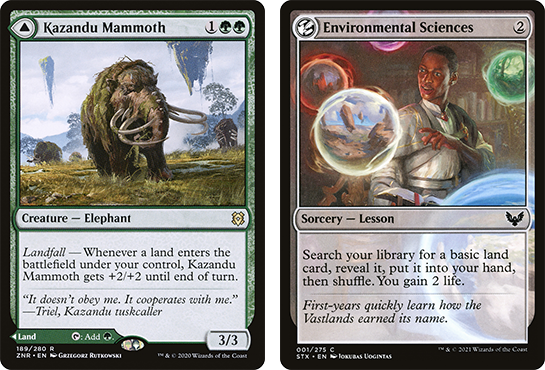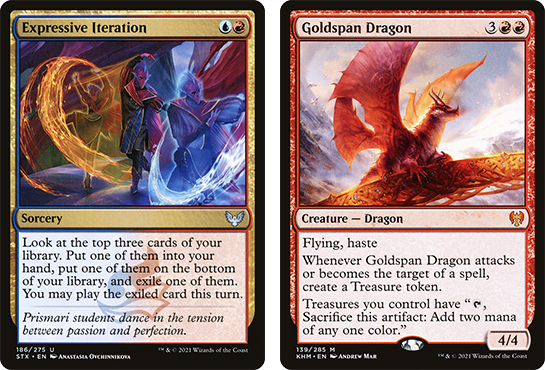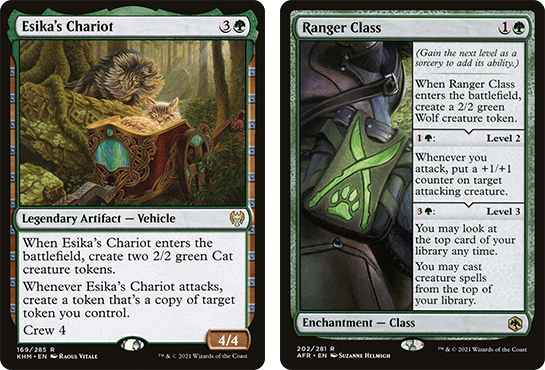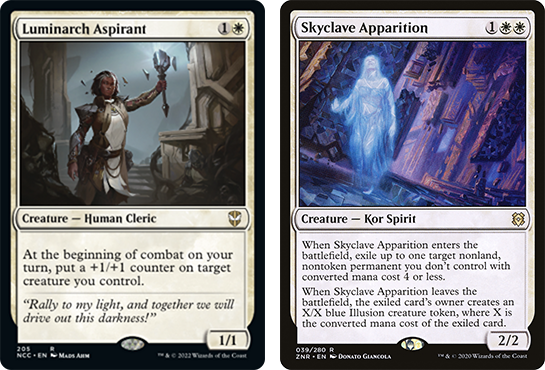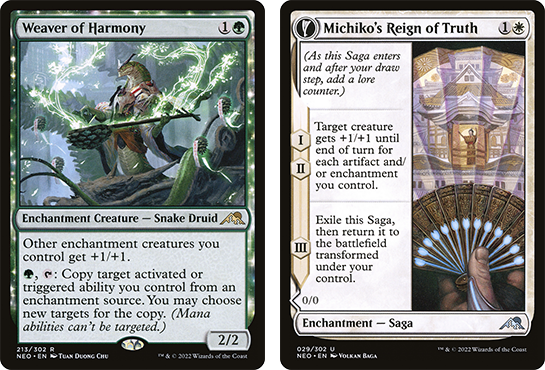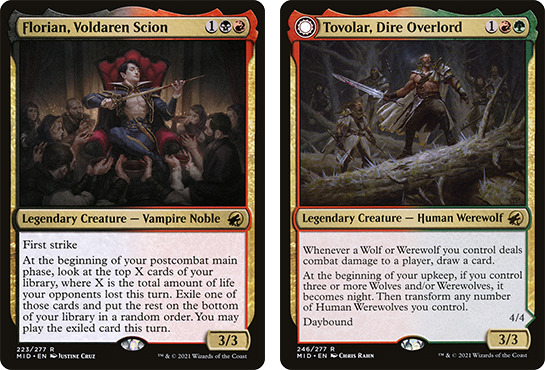Standard has been good in 2022, particularly since the bans to Alrund’s Epiphany and Divide by Zero. Kamigawa: Neon Dynasty and Streets of New Capenna both managed to shake up the metagame despite the high power level of the established decks — the former by adding super-powerful staples to underplayed colors and the latter simply by bringing better manabases to support three and four color decks.
Of course, those tremors were nothing compared to the real earthquake about to hit Standard with the addition of Dominaria United on Sept. 9. We don’t know what that set will offer yet, but we do know that we’ll be saying goodbye to Zendikar Rising, Kaldheim, Strixhaven: School of Mages and Dungeons & Dragons: Adventures in the Forgotten Realms.
That’s a huge chunk of the Standard card pool, and essentially no major archetypes will survive unscathed. So what will our healthy Standard look like after being put through the big rotation blender?
THE LAY OF THE LAND
Before touching on changes to specific decks, let’s consider the most fundamental change to the Standard paradigm in any rotation: manabases.
We’ll be saying farewell to the powerful dual-faced lands from Zendikar Rising and Kaldheim’s Pathway cycle. Along with Strixhaven’s underplayed Snarl cycle, that covers every multicolor land in the format that can potentially enter the battlefield untapped on turn 1.
Historically, this can severely restrict the possibilities for aggro decks — even if we get a new cycle of strong dual-lands in Dominaria United, they may be forced to play only one color unless they can build around situational lands like Secluded Courtyard.
But the consequences for manabases extends beyond aggro, this time. The year of design following Zendikar Rising was extremely focused on consistency, with each set adding its own mechanics to avoid bad draws and even out the probabilities of your deck.
MDFCs, Landfall, Foretell, Lessons, the huge glut of Treasure producers — more than anything else, these all raise the minimum and average impact of your draw steps. Their flexibility and dependability encouraged players to pursue greedier, more extreme deck configurations – and now they’ll have to take a step back.
ON THEIR WAY OUT:
URx Control
Notable Losses: Expressive Iteration, Goldspan Dragon, Magma Opus, Jwari Disruption
This has been the No. 1 shell in Standard since the day Expressive Iteration entered the format, and only with its departure will we finally be free.
We haven’t seen a cantrip this obviously powerful since Ponder, but getting to pair it with the perfect, all-upside threat in Goldspan Dragon definitely hasn’t hurt UR’s dominance. Choosing a third color to splash with this low-risk-high-reward package (which at this point also includes Fable of the Mirror-Breaker) is just picking different vanity plates for the same faster-than-legal sports car.
But what about after the whole engine block of that car is ripped away in rotation? Will concepts like Jeskai Hinata–Opus, Grixis Vampires and Temur Titan find a way to move on?
It’s plausible, but if those roads do exist, they pull apart in much more distinct directions. Players will need to lean more into the specific strengths of lynchpins like Hinata or Evelyn, the Covetous, using narrow synergy to replace raw power and flexibility.
So no more sharing 35+ spell slots across four “different” archetypes — and without the overwhelming incentive to take turns two and three off for insane draw-fixing spells, we’ll hopefully see more variety in the pace of play as well.
Green Stompy
Notable Losses: Esika’s Chariot, Blizzard Brawl, Werewolf Pack Leader, Old-Growth Troll, Ranger Class, Kazandu Mammoth, Lair of the Hydra
Like UR, the green aggro deck proved its power this Standard season by coming back from a targeted ban — Faceless Haven — and continuing to dominate. And like UR, that prolonged success was all achieved with a handful of busted cards which players must now learn to live without.
All the rotating cards are historically exceptional for their cost and function. The creatures combine excellent statlines with a shocking amount of free value — repeated draw triggers from a 3/3 for two, a 4/4 for three with a second 4/4 stapled to it. Esika’s Chariot is, at absolute worst, 8/8 of stats for four mana, which almost inevitably takes two cards to remove completely.
Blizzard Brawl and Snakeskin Veil both costing a single mana made the deck’s momentum almost unstoppable, particularly on the play. Yes, Brawl being a Sorcery was a trade-off, but the indestructibility clause made it actively good to play before attacks anyway.
Even the land suite felt ideal for the deck. Setting aside Faceless Haven, you still had Lair of the Hydra, Kazandu Mammoth and Turntimber Symbiosis (if you wanted it) to turn your one-too-many-land into a proactive board presence. Now you just have Boseiju, Who Endures — and that one doesn’t go face.
Green will also be looking to replace lost power with more synergistic card choices, and it has some good direction both for mono-green and two-color variants. Fight Rigging is the most likely centerpiece, since it’s already seeing success in multiple formats.
However, this would also be the moment for a Wolf/Werewolf tribal theme to shine, fully utilizing solid cards like Ascendant Packleader, Howling Moon, Cemetery Prowler and Outland Liberator.
Or Dominaria United could mark the return of the one-cost mana dork, and we could find green right back at the top of the tier list again. Only time will tell.
ON THEIR WAY UP:
RB Artifacts
Notable Losses: Deadly Dispute, Lolth, Hive of the Eye Tyrant
The deck I like to think of as “Blood Factory” distinguishes itself from the blue-having RB archetypes by leaning into cheap, sorcery speed cards which mostly replace themselves. Oni-Cult Anvil is something like a re-balanced Cat-Oven combo — only in a single card which stacks magnificently in multiple copies.
Other than the already-peripheral curve-topper in Lolth, the only spell this deck loses is Deadly Dispute. And while it’s certainly best of its kind, a deck with such a low curve will be able to survive the step down to Reckoner’s Bargain fairly well.
But when looking to the future, we also need to see how much room a deck has to improve — and that’s where the Blood Factory deck really impresses me. Any decent, one-cost artifact, solid bit of removal or efficient draw engine out of Dominaria United will be immediately useful here — and I expect artifacts will be a major theme of every Dominaria set.
White Weenie
Notable Losses: Usher of the Fallen, Luminarch Aspirant, Portable Hole, Cave of the Frost Dragon, Elite Spellbinder, Skyclave Apparition
Fans of hatebears and Humans — you’re in luck. Current white aggro is much heavier on Midnight Hunt and Crimson Vow than current green aggro, so it looks like mono-white will be able to soldier on more or less intact.
Reidane, God of the Worthy and Skyclave Apparition are already sliding out of current decklists; the latter mostly superseded by Brutal Cathar. Sungold Sentinel is definitely a step down from Luminarch Aspirant, but it’s going to be good enough in a smaller, weaker Standard meta.
The hardest effect to replace will be the combined disruption and air support of Elite Spellbinder and Archon of Emeria. A big loss, but still not so unique or essential as the cards rotating out of rival decks.
Meanwhile the future of two-color white variants, such as the powerful Boros deck which has come to prominence since Neon Dynasty, will hinge on where the most powerful one-drops are printed. Untapped dual-lands are another big factor, as I mentioned above.
Currently, most players go looking for a second color to add more speed over the unusually high-cost and reactive mono-white build. But without access to at least one land which can offer either color turn one, that speed payoff won’t be reliable enough to justify itself.
Perhaps that means players should follow the Wandering Emperor’s signal and find a slower, value-focused build? Wedding Announcement, Sunset Revelry and Halo Fountain offer card advantage without leaving your main color or themes, and cards like Ao, the Dawn Sky, Elspeth Resplendent and Sanctuary Warden offer ideal targets for the backbreaking Invoke Justice. You won’t get to combine it with the super-fun Velomachus Lorehold as you do now, but winning a lot of games is usually fun enough.
GW Enchantments
Notable Losses: Runeforge Champion (and the Rune auras), Showdown of the Skalds, various Pathway lands
As powerful as the Naya Runes deck has been since Neon Dynasty, I personally know more than a few players who felt disappointed the deck wasn’t so much about enchantment synergies in general as it was about… Naya Runes. If you’re one of those players yourself — good news. The rotation reaper is about to cut the entire Runes package neatly out of the deck, leaving the remainder intact for you to enjoy unharmed.
Instead of building around Runeforge Champion, I expect people to build around Weaver of Harmony. The combination of on-curve stat injection from a two-mana lord and a value-adding activated ability will make up for a lot of the shortcomings of the lower-rarity enchantment creatures and sagas.
GW Enchantments is emblematic of a lot of potential post-rotation decks which might remind old heads of Block Constructed — they take a particular set mechanic or line of synergy and run as far as they can with it.
There’s a lot of these synergistic archetypes lying dormant across the four surviving Standard sets — UB Ninjas, GW Humans, Cabaretti Tokens, UG Mill/Ramp, UW Spirits, RG Werewolves, Mardu Vampires, Greasefang Vehicles, etc.
All it would take for any of these themes to materialize as a significant tournament-winning archetype would be one or two well-placed rares in Dominaria United to fill out their strategy. What sets GW Enchantments apart is that it possesses that depth of cards already — the only thing holding it back has been the Runes build, with its higher potential to steal games off dominant late-standard decks like URx.
A ROLLING FORMAT GATHERS NO MOSS
Any honest pundit has to reckon with the sheer unpredictability of future events, and now that you’ve read my whole elaborate vision for future Standard it’s a good time to remind ourselves of that. This is only an educated guess at what’s to come, spiced with a little raw enthusiasm for the fresh deck building possibilities rotation brings.
I’d also like to take a moment to sympathize with those players for whom rotation looms as a threat rather than a promise; players about to lose a big chunk of their favorite deck all at once. That loss of momentum can easily lead to disillusionment with Standard or Magic as a whole.
But there’s something to be said for the endless novelty of rotation, even when it puts a shelf life on great decks. It gives more cards a chance to shine, and more chances for players to experiment with new play styles instead of the metagame settling into a rut.
Cards from Kaldheim and Zendikar Rising were designed to compete with the format-warping threats of Ikoria, Eldraine and Theros: Beyond Death, which were themselves maintaining the insane benchmark set by War of the Spark. The fact that Goldspan Dragon, Esika’s Chariot, Expressive Iteration, and Luminarch Aspirant lack equal replacements in the post-rotation card pool shows the conscious effort that’s been made to step back from that ledge — and hopefully from the era of multiple Standard bans per set.
I wouldn’t try and argue that powerful Magic is less fun, but the new format should leave room for cards to be powerful in different ways than just “must-kill threat that trades favorably with removal.
There’s so many ideas to re-evaluate and explore, even in just the sets we already have now. I trust that it’s enough for all of us to find a new favorite deck to latch onto when September rolls around.

Tom’s fate was sealed in 7th grade when his friend lent him a pile of commons to play Magic. He quickly picked up Boros and Orzhov decks in Ravnica block and has remained a staunch white magician ever since. A fan of all Constructed formats, he enjoys studying the history of the tournament meta. He specializes in midrange decks, especially Death & Taxes and Martyr Proc. One day, he swears he will win an MCQ with Evershrike. Ask him how at @AWanderingBard, or watch him stream Magic at twitch.tv/TheWanderingBard.


